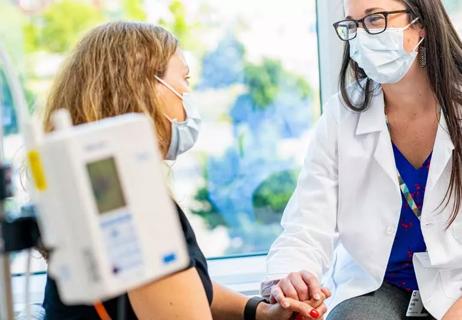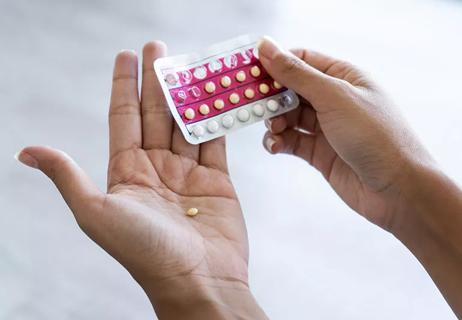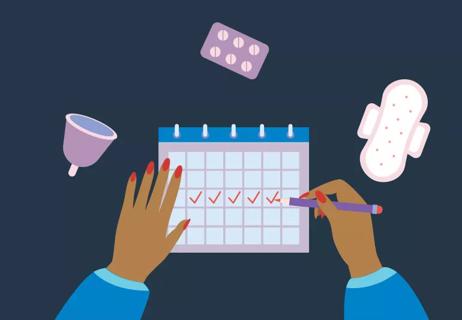Hormonal changes are the likely culprits behind the aches and fatigue before your period

Having your period each month can be a physical and emotional rollercoaster. For some people, the low feeling before their period includes flu-like symptoms — also known as “period flu.”
Advertisement
Cleveland Clinic is a non-profit academic medical center. Advertising on our site helps support our mission. We do not endorse non-Cleveland Clinic products or services. Policy
But according to Ob/Gyn Sara Yuen, MD, “Period flu isn’t the flu or an official medical diagnosis. It’s a type of premenstrual syndrome (PMS), which can cause symptoms similar to the flu.”
Dr. Yuen shares what researchers know about period flu and how you can relieve your symptoms.
It’s not clear how many people get the specific symptoms of period flu, but PMS is very common. Up to 90% of women and people assigned female at birth (AFAB) get PMS at some point. Most people have manageable symptoms, says Dr. Yuen.
A debilitating form of PMS called premenstrual dysphoric disorder (PMDD) affects about 5% of women and people AFAB. Healthcare providers classify PMDD as a psychiatric disorder because it can cause significant mental health distress. Severe depression, anxiety, mood changes and even thoughts of suicide can occur with PMDD. If you’re experiencing these symptoms, it’s important to speak to a mental health provider or psychiatrist.
PMS symptoms can start any time after ovulation, although it’s unusual to have symptoms for the full two weeks between ovulation and your period starting. For most people, symptoms kick in a few days before their period and go away once it starts. It can be helpful to keep a menstrual diary to track your symptoms.
Advertisement
The symptoms of PMS can vary widely from person to person. People who experience period flu may notice:
Healthcare providers don’t know exactly what causes period flu and PMS. It’s most likely related to changes in hormones and chemicals during your menstrual cycle. A typical menstrual cycle is 28 days, but can range from 21 to 35 days. Day one is the first day of your period and cycle length is counted from day one of your last period to day one of your next. Ovulation usually occurs around day 14 in a 28-day cycle.
Estrogen and progesterone are hormones that help regulate your menstrual cycle. They surge before and after ovulation. If you don’t become pregnant, the levels drop just before your period. This decline in hormones can cause headaches, mood swings, fatigue and other PMS symptoms.
Chemicals called prostaglandins may also contribute to PMS. Before your period, cells in the lining of your uterus release prostaglandins. The prostaglandins help your uterus contract and shed its lining during menstruation.
“The contractions are the cramping pains you feel,” explains Dr. Yuen. “Prostaglandins produced by your uterus can also cause diarrhea, nausea and sometimes even a low-grade fever before your period.”
There are many ways you can ease flu-like symptoms before your period. “Certain medications can help,” says Dr. Yuen. “Adopting healthy lifestyle habits can also make a big difference.”
These nine steps can help you reduce period flu and PMS symptoms:
A healthy diet can improve PMS symptoms by stabilizing your blood sugar. Changes in blood sugar can cause food cravings, irritability and mood swings.
“Reduce refined sugars by substituting whole grains, such as whole-wheat bread and brown rice,” Dr. Yuen suggests. “Eating smaller meals throughout the day with healthy snacks in between can also help maintain your blood sugar.”
Certain foods can also decrease inflammation in your body and reduce PMS symptoms. Aim for an anti-inflammatory diet rich in:
And eat less:
Studies show that calcium can improve PMS symptoms, especially mood changes. The recommendation for premenopausal people is 1,000 milligrams of calcium per day and 800 international units of vitamin D. (Vitamin D helps you absorb calcium.)
Your best bet to increase calcium is by eating more calcium-rich foods, including low-fat dairy, calcium-fortified foods, and nuts and seeds. If needed, you can also get calcium through supplements. But getting too much calcium can also be a risk, so check with your provider before beginning a supplement.
Advertisement
NSAIDs are over-the-counter medications. They block your body’s production of prostaglandin, easing cramps, body aches and diarrhea.
A warm compress can help reduce the cramping and muscle pain of PMS. It’s also a great way to feel warm and cozy.
Hormonal birth control methods contain progestin (a compound similar to progesterone) or estrogen and progestin. The steady dose of hormones helps maintain hormone levels and reduce prostaglandin production.
Hormonal birth control comes in many forms, including short-acting options such as the pill, patch, shot and vaginal ring. Long-acting options include the implant and hormonal intrauterine devices (IUDs).
Regular aerobic exercise is good for your health — and helps reduce PMS symptoms. Aim for 30 minutes of moderate-intensity exercise per day, five days a week — or 150 minutes per week. Running, brisk walking and biking are great ways to get moving.
Smoking is linked to a wide range of health conditions, including PMS. Quitting smoking can ease PMS symptoms. Trying to quit can be hard, but it’s one of the best steps you can take to help you live a longer, healthier life. Ask your healthcare provider for ways you can quit.
Getting plenty of sleep can help combat the fatigue, irritability and poor concentration symptoms of PMS. Dr. Yuen recommends at least seven hours of sleep a night.
Advertisement
Reducing stress can help you manage the psychological aspects of PMS, such as depression, anxiety and mood swings. Ways to reduce stress include:
If you get the period flu every month, you don’t have to push through the distressing symptoms until they pass. Talk to a healthcare provider to figure out the best plan to relieve your pain and discomfort. Whether it’s a prescription for birth control or discovering the right combo of food, sleep and exercise, you can work together to find a solution that helps you feel your best, every day of the month.
Advertisement
Learn more about our editorial process.
Advertisement

Reasons for spotting can include menopause, uterine fibroids, PCOS and birth control

Typically, you can keep your appointment, let your gynecologist know and let your worries go

Stress, extreme diet and exercise, PCOS and, of course, pregnancy could be responsible

If your period hasn’t come for three months, it’s best to see a doctor

Eating and exercising according to your cycle can reduce PMS and period symptoms

Keeping a steady level of hormones is key in preventing a period

The absorbent and reusable product may be a game changer for your menstrual cycle

Is it the moon, pheromones or coincidence?

Type 2 diabetes isn’t inevitable with these dietary changes

Applying a hot or cold compress can help with pain